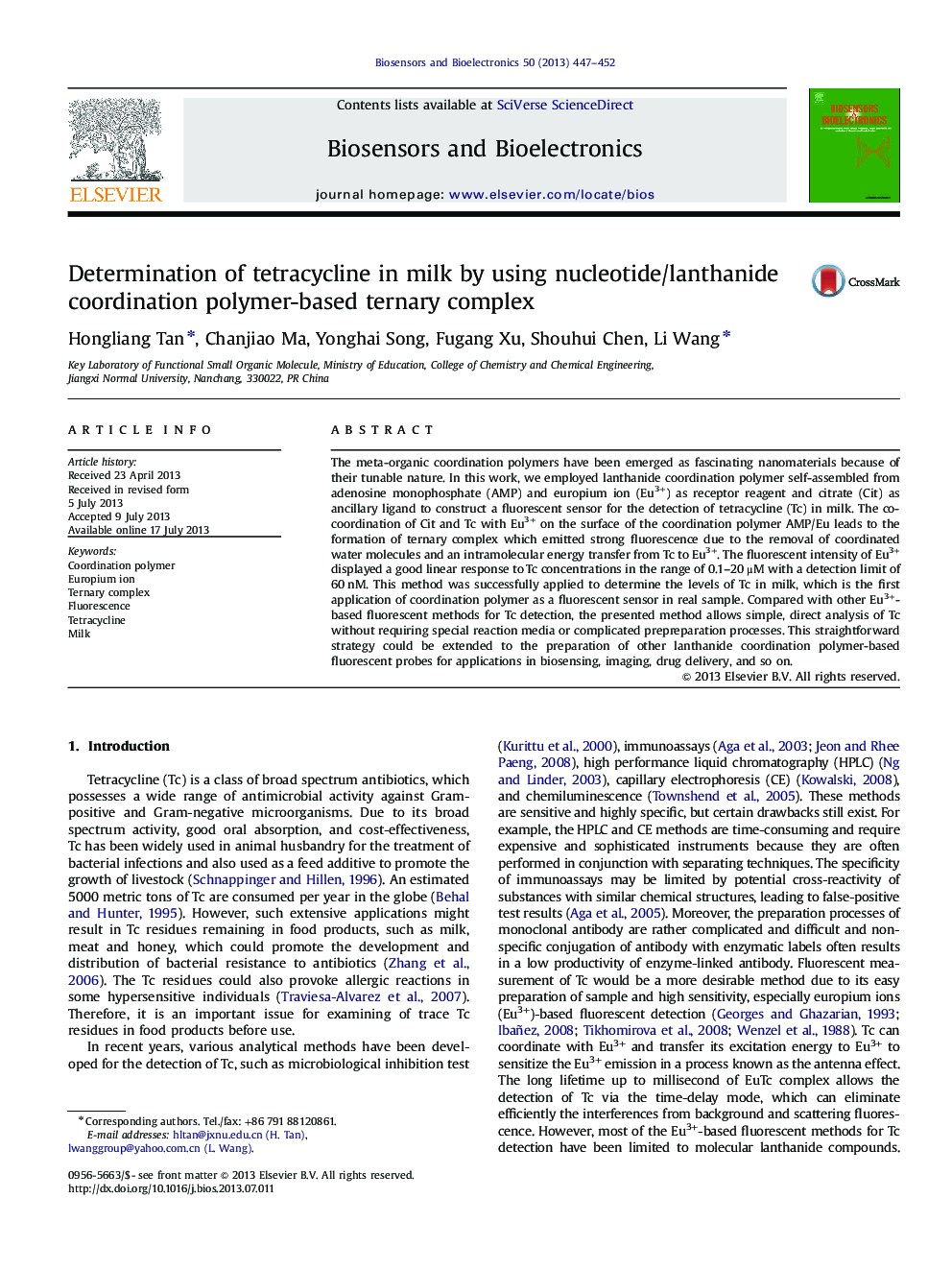| Article ID | Journal | Published Year | Pages | File Type |
|---|---|---|---|---|
| 7234058 | Biosensors and Bioelectronics | 2013 | 6 Pages |
Abstract
The meta-organic coordination polymers have been emerged as fascinating nanomaterials because of their tunable nature. In this work, we employed lanthanide coordination polymer self-assembled from adenosine monophosphate (AMP) and europium ion (Eu3+) as receptor reagent and citrate (Cit) as ancillary ligand to construct a fluorescent sensor for the detection of tetracycline (Tc) in milk. The co-coordination of Cit and Tc with Eu3+ on the surface of the coordination polymer AMP/Eu leads to the formation of ternary complex which emitted strong fluorescence due to the removal of coordinated water molecules and an intramolecular energy transfer from Tc to Eu3+. The fluorescent intensity of Eu3+ displayed a good linear response to Tc concentrations in the range of 0.1-20 μM with a detection limit of 60 nM. This method was successfully applied to determine the levels of Tc in milk, which is the first application of coordination polymer as a fluorescent sensor in real sample. Compared with other Eu3+-based fluorescent methods for Tc detection, the presented method allows simple, direct analysis of Tc without requiring special reaction media or complicated prepreparation processes. This straightforward strategy could be extended to the preparation of other lanthanide coordination polymer-based fluorescent probes for applications in biosensing, imaging, drug delivery, and so on.
Related Topics
Physical Sciences and Engineering
Chemistry
Analytical Chemistry
Authors
Hongliang Tan, Chanjiao Ma, Yonghai Song, Fugang Xu, Shouhui Chen, Li Wang,
